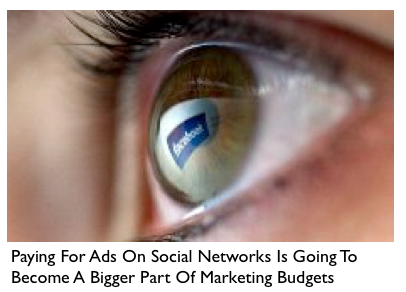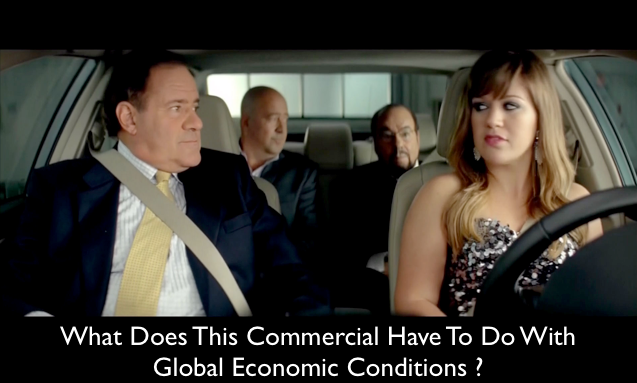 Social Media Platforms Are Offering New Types Of Paid Advertisement Opportunities. Here Are Some Things Health Club Owners Should Keep In Mind Before Taking The Plunge.
Social Media Platforms Are Offering New Types Of Paid Advertisement Opportunities. Here Are Some Things Health Club Owners Should Keep In Mind Before Taking The Plunge.
One of the biggest shifts in consumer behavior during the past decade is the increasing use of the Internet as a key part of decision making when people shop for goods and services. Health clubs are not immune from this trend and as a result, many marketers are evaluating and rethinking traditional advertising methods. The fact is that club members trust traditional advertising less and less. Therefore, marketing’s key goal should be to gain the trust of potential and existing customers. As a result smart health club owners and brands are evaluating their messages and engagement efforts closely (see my recent post Still Investing In Old School Advertising ? to learn more). They are also considering how customers are relying on social media networks more and more as part of the buying process.
Customers relied mainly on search engines like Google to obtain information from the Internet in the recent past as part of their buying process. However, more people are now spending time on Facebook and other social platforms than Google. As the age of Social Media has emerged, networks, including Google’s own new social platform Google+, are evaluating or actually providing paid advertising opportunities for businesses to reach customers in new ways. Given multiple online advertising options what should gym owners do? I recommend trying these new soadvertising options and here are five key things you should keep in mind if you do.
1. Plan For It
While being a different medium, paid advertising on social media platforms like Facebook still requires a plan and must fit inside the context of a business and marketing strategy. If your goal is to build your membership base by 15% and personal training revenues by 20% you need the marketing budget and promotional tactics to get those results. If you are ready to try paid advertising on social media platforms make certain you budget and plan for it. That often means you’ll have to spend less money on other forms of promotion as a result. Make sure you resource the advertising effort appropriately.
2. Know Who You Are Targeting
People who use social networks divulge a lot of personal information in their profiles, which is helpful to advertisers. Social networks like Facebook let you choose which groups you want your ads to reach. Health clubs can target ads based on profile information, like age, gender, location, and interests. You can choose to target people who are fans of your company's Facebook page or friends of your fans. You can avoid your fans altogether, if your goal is to broaden your pool of customers or target fans of competing gyms. You can also advertise only to Facebook users who mention certain words in their profiles or status messages. Knowing who you are targeting is really important so think about it.
3. Test A Lot
Ad prices on Facebook and most other social networks are set by an auction process, similar to Google AdWords. You can pay based on the number of times people see an ad or how many times the ad is clicked. Most Facebook advertisers choose the click through payment method. However, it's worth testing both payment types to see which is more cost effective. Try spending $20 for a small advertisement using both methods. It's also very inexpensive and easy to test ads on different targeted groups you are trying to reach to discover what the most effective approaches are.
4. Track Campaigns
Services like Facebook track how many times your ads are shown and the number of clicks they receive. It doesn't track what users do after they click. For example, did the prospect join your gym or just visit your website as the result of the ad? This is a big drawback of Facebook's ad service, but there is a solution. While Facebook is working to include more information in its reporting tools its important to do your own tracking. Programs like Google Analytics, which is free, or HitsLink, can help to track which Facebook ads actually create new business. Use these services to track your campaigns.
5. Make Creative Ads
It's tough to get noticed so creating good ads is important. Usually ads from different advertisers run next to one another. Photos and messages from friends also compete for users' attention. You need to stand out and unconventional advertisements often work best. Being irreverent, different and trying to share unconventional messages and images that connect with prospects is the most effective way to advertise. Be creative and your ads will generate better results.
With over 800 million Facebook users, social media platforms are becoming a viable place for health clubs to advertise because the ads can be highly targeted and cost effective. As with any marketing medium, social networks require time and effort in order to generate results. Investing in social network advertising without keeping these things in mind can be a waste of your resources. Paid advertising on social networks is only good for health club owners if they take it seriously!
About the author:
Bryan O’Rourke is a health club industry expert, technologist, financier, and shareholder and executive in several fitness and health club companies. He serves as a member of the GGFA Think Tank and is a partner in The Health Club For Women and Chair of the Medical Fitness Association’s Education Committee. To learn more contact Bryan here today .
 I know, I know...I can almost read the minds of some of the folks who will read this article. "Gee Bryan, give it up already with this creative disruption stuff....Picture taking has nothing to do with the health club or fitness industry. Enough !" OK, I'll try not to beat the "dead horse" of disruption too hard again, be it with examples of Best Buy, Sears, or Borders Books . In this case, however, I could not help but serve up the interesting tale of Kodak and Instagram in light of Facebook's announcement that they'll acquire the Instagram business for $1 billion dollars. I thought an article by Lance Ulanoff titled, "Does Instagram Owe Kodak A Billion Dollar Thanks?", included some pretty remarkable insights that can apply to the health club and fitness space today. Here's a slice of Mr. Ulanoff's observations:
I know, I know...I can almost read the minds of some of the folks who will read this article. "Gee Bryan, give it up already with this creative disruption stuff....Picture taking has nothing to do with the health club or fitness industry. Enough !" OK, I'll try not to beat the "dead horse" of disruption too hard again, be it with examples of Best Buy, Sears, or Borders Books . In this case, however, I could not help but serve up the interesting tale of Kodak and Instagram in light of Facebook's announcement that they'll acquire the Instagram business for $1 billion dollars. I thought an article by Lance Ulanoff titled, "Does Instagram Owe Kodak A Billion Dollar Thanks?", included some pretty remarkable insights that can apply to the health club and fitness space today. Here's a slice of Mr. Ulanoff's observations:








